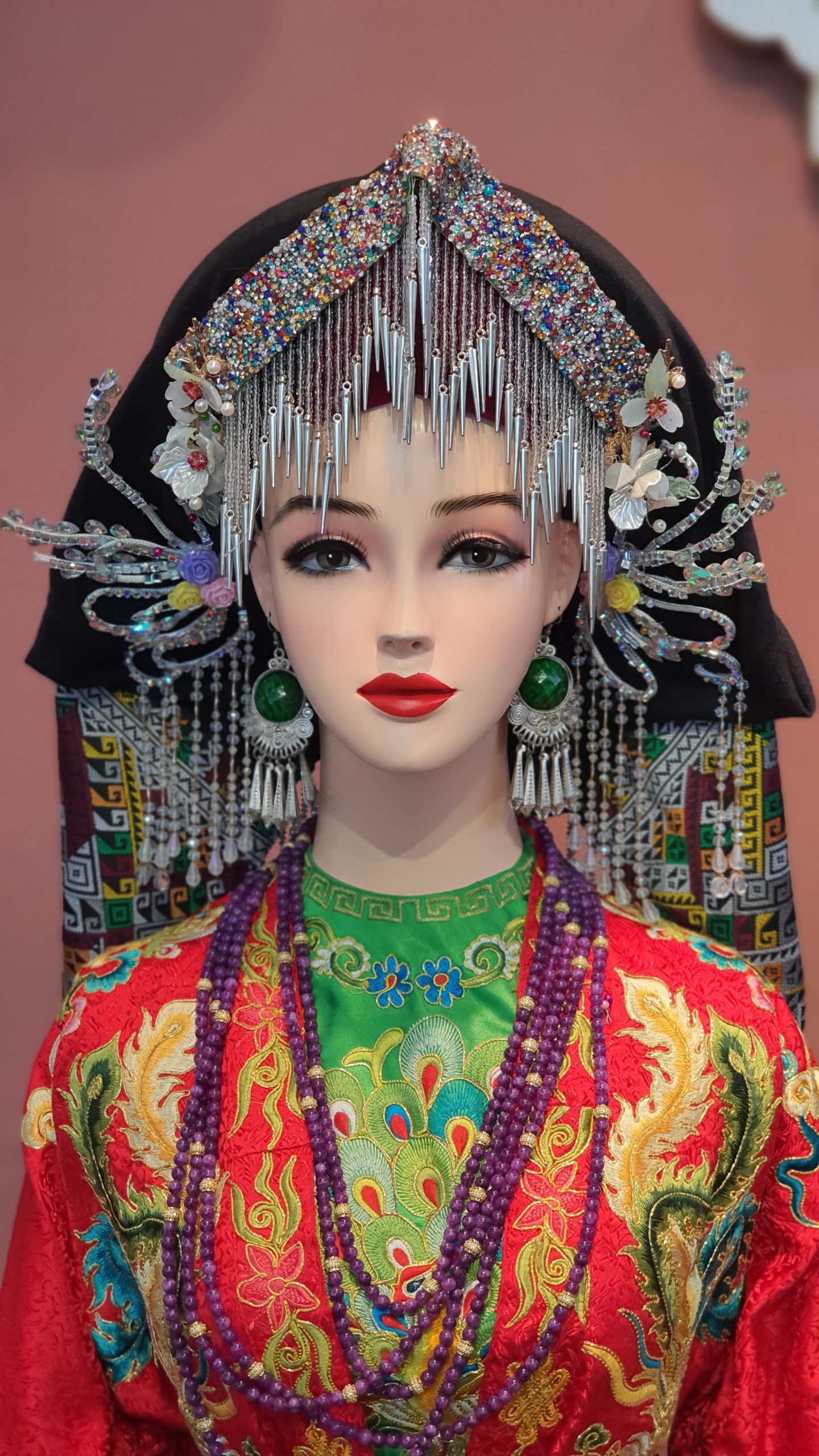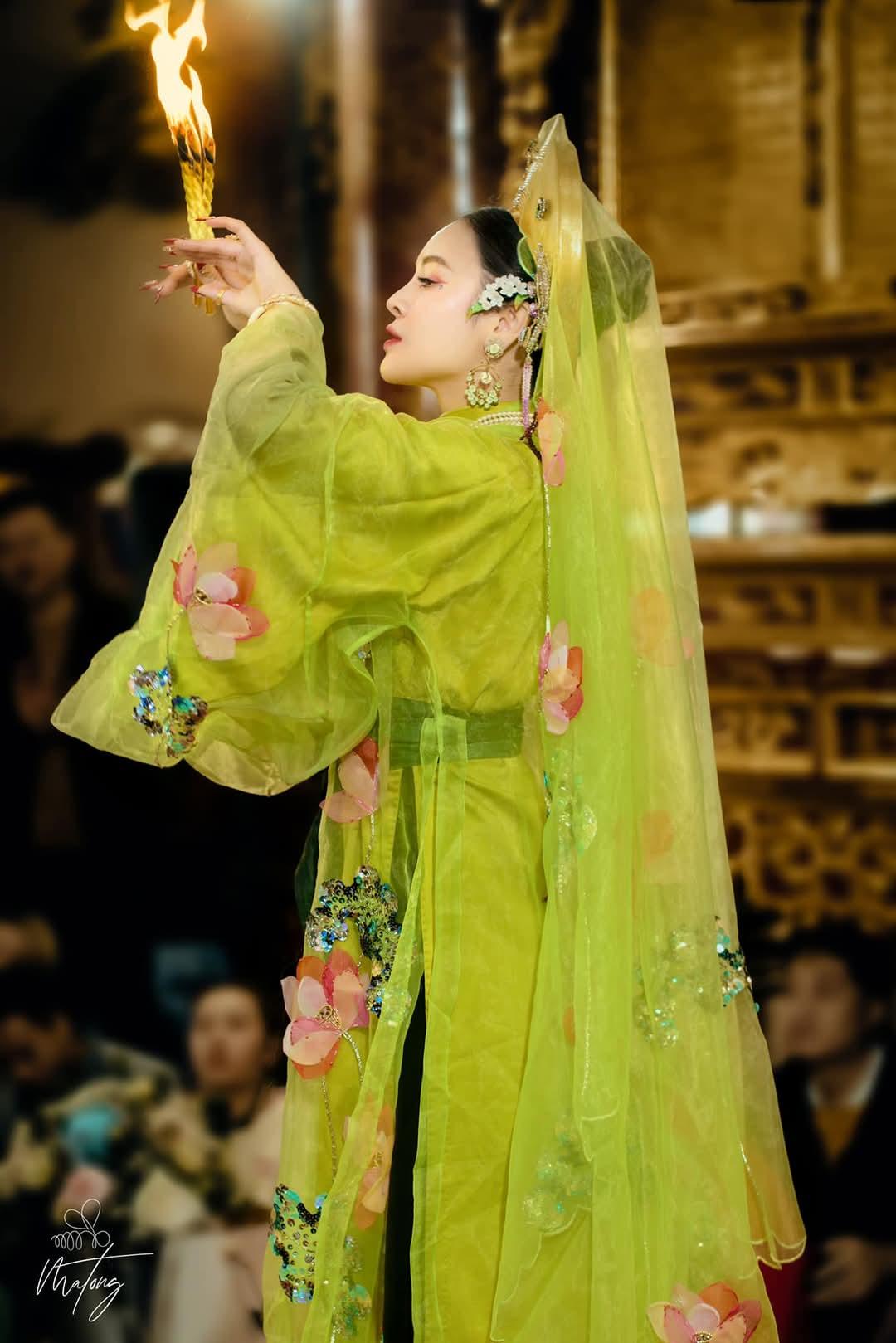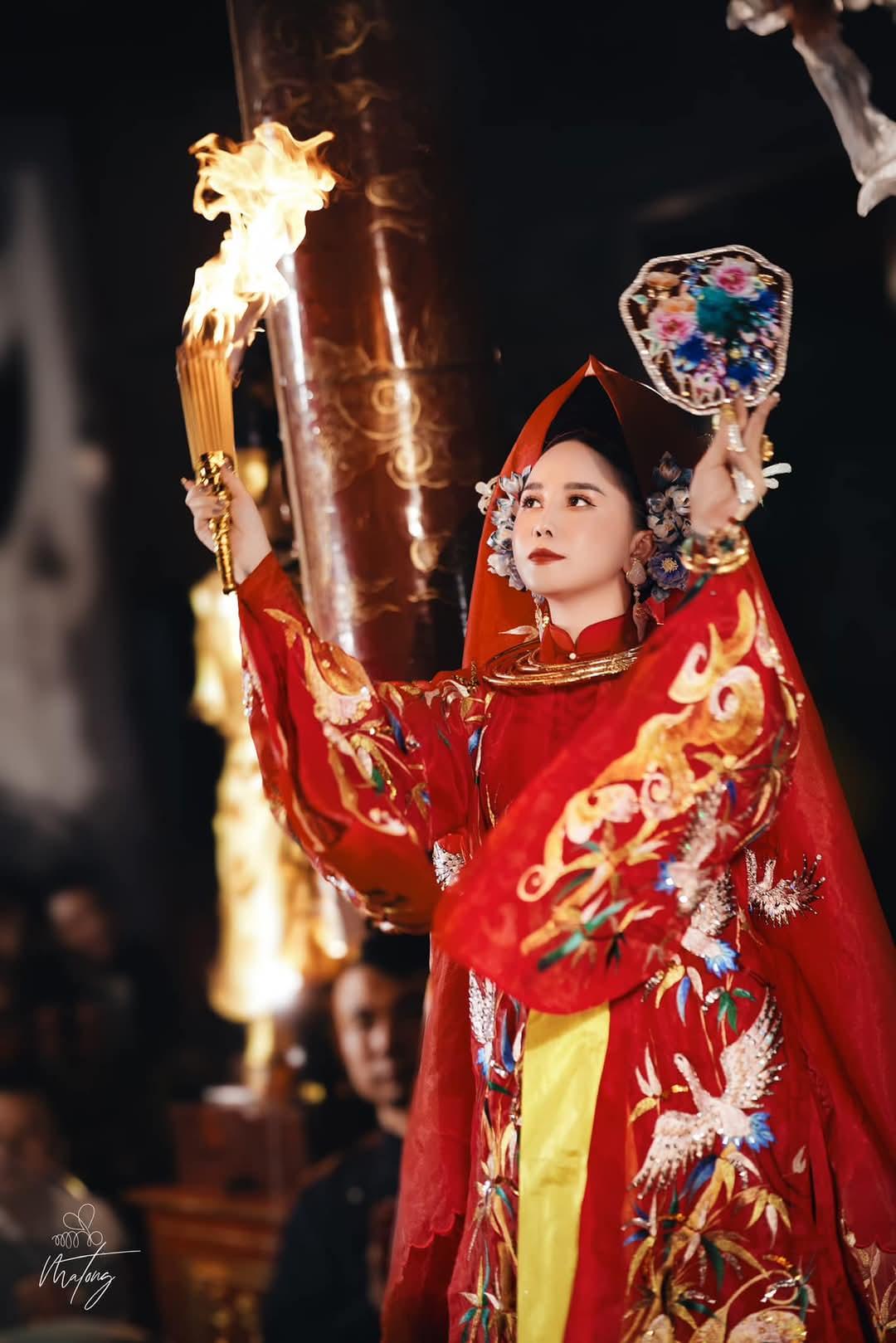Hầu đồng is an important ritual in the worship of the Mother Goddesses of the Four Palaces (Tín ngưỡng thờ Mẫu Tam Tứ phủ). In essence, it is considered a ritual of communication with deities and spirits from the other world through spirit mediums (cô đồng, bà cốt, or cậu đồng).
The ritual of hầu đồng involves many ceremonial parts. The timing, procedures, and scale of each segment may vary by locality and carry different meanings. However, there are common principles that mediums must understand and follow correctly to avoid offending the deities.
1. The Three Mother Goddesses (Ba giá Mẫu)
• The veil must never be opened.
• No yellow face-covering veil is allowed.
• Do not wear the Mother Goddess’s robe. If worn, the robe of one’s tutelary destiny (áo bản mệnh) must be inside.
• First and Second Mother Goddesses receive offerings of fresh incense; the Third Mother receives nine sticks of incense.
2. Buddha, the Jade Emperor,The Earth Mother , The 9th Mother , and the Council of Mother Goddesses
It must be remembered that in hầu đồng there is no possession of the Buddha, the Jade Emperor, or the Council of Mother Goddesses.
3. Destiny Robe (Áo bản mệnh) and Face-Covering Veil (Khăn phủ diện)
These are the foundation of hầu đồng that every medium must know. Yet nowadays, some wear the Mother Goddess’s robe instead, while treating the destiny robe merely as an object of consecration. This is fundamentally wrong: who would “consecrate” the Mother’s robe for possession? Even worse, some have arrogantly used yellow face-covering veils.
4. The Trần Dynasty Spirits
• Only when serving Đức Ông (the Third Rank) may the upper belt be put on.
• Cô Đại Hoàng wears the yellow robe.
• In the Trần palace, one must not sit on a chair, except when interrogating evil spirits. Sitting on a chair otherwise is disrespectful to the Three Mothers.
5. The Mandarins (Các quan)
• When the Mandarins descend, they must wear crossed sashes and tie the scarf in the “phúc” knot or other proper styles.
• They must not wear theatrical boots or hats, which would turn the ritual into mere performance.
• The First Mandarin belongs to the monastic line; thus, when descending, he performs the consecration but does not engage in festive drinking. The Fourth Mandarin, from the royal envoy line, is the same.
• Once the master medium has served these two mandarins, disciples may not serve them again.
• For consecration, the incense-offering scarf (khăn tấu hương) must be used.
• When serving the Mandarins, Princes (Ông Hoàng), and Young Lords (Cậu), there must be four rounds of prostrations: three bows in the center, two on each side, and one in all directions. Each round symbolizes incense offerings to one of the Four Palaces.
• During these movements, the body should advance three steps and retreat two. The face looks up at the divine assembly, but during kneeling bows, the face must lower and eyes close.
• All four rounds must include incense. Omitting incense, offering only the scarf, is like having a bowl without rice, or a cup without water—an act of disrespect.
• Exceptions are made for elder mediums who cannot stand: they must still offer incense, then rise with support.
• Sword or saber dances must not point toward the divine assembly, nor should the blade be drawn across one’s own throat.
6. All Ritual Actions Require Permission and Consecration
• Whether consecrating people, horses, elephants, or ritual statues, the incense scarf must be placed on the head, followed by five consecration bows, with three pats on the animal’s flank.
• Mandarins, Princes, and Young Lords sit cross-legged or in ritual positions, with two sashes tied in the “phúc” knot or scarf style.
• Dames (Chầu bà) and Maidens (Cô) must kneel during consecration, using fan and nine sticks of incens
• Some, like the 1st Maiden or the 3rd Maiden, offer incense without waving festival flags.
• At the beginning of spring, flag and sword dances are avoided; only command flags or swords are used in temple consecration. White clothing is also forbidden, even for the Water Palace—red robes and red scarves must be worn to mark the festive season in accordance with Vietnamese tradition.
7. The Dames (Chầu) and Maidens (Cô)
• Dances of the Dames and Maidens must be gentle.
• The Dames wear the water caltrop scarf or sail-shaped scarf.
• Maidens wear flower scarves, ring scarves or belt scarf. Cô Bơ may use a three-color scarf.
• When consecrating, Dames and Maidens stand and offer fans and incense with dignity, not swaying or dancing.
• The Second and Sixth Dames scatter blessings only for the temple, not for the marketplace. In early spring, the Second scatters flowers as blessings.
• The Fifth and Little Dames scatter blessings and go to the marketplace.
• The Tenth Dame rides a horse, carrying flag and sword, but does not wear shoes.
• In summer, Maidens descend to dispel epidemics with offerings of money and fruit, which must later be released into a river or crossroads (since they are not edible). This is usually done by the 2nd Maiden or the 6th Maiden.
• Whenever offering wine, cigarettes, or water, the mouth must be covered with a scarf or fan.
• Money must not be scattered onto the ground as ferry tolls.
• The 3rd maiden (Cô Bơ) tucks ferry money at her side and places a burning incense stick behind her ear.
• In all rituals, one must never turn one’s back or point toward the divine assembly.
• At the very first possession, the veil must be tossed, the mouth purified, and the incense bowl placed on the head before opening the palace. If ill, the Tam phủ thục mệnh ritual must be performed first.
• There must always be a ritual petition (sớ hầu). If serving in multiple temples, the petition must be “sent” to each temple, but only after notifying the deities beforehand, and thanksgiving must be offered three days later (immediately if far away, but homage is still required upon return).
• Before serving, permission must be sought from the deities, temple keeper, ritual master, musicians, ritual priest, and the people. Afterward, thanks must be given to Buddha, the deities, and the people.
• To schedule a session, the medium must seek the master’s permission, prepare offerings, and request an auspicious date.
• When inviting the master, temple keeper, assistant mediums, or ritual priests, offerings must first be presented to the deities before inviting them. Offerings for elders (24 years or more in practice without their own shrine) must be presented on a plate.
• Veils must not be excessively long.
• Princes carry ritual staffs or books, but the 9th Prince must not hold a baton.
• Sandals or wooden clogs must not be worn on the altar platform.
• Hầu đồng must always be solemn, reverent, and sincere, yet joyful. One must not incite ignorance, slander, deceive, exploit mediumship for immoral or unjust acts, or indulge in jealousy, suspicion, greed, or disputes over blessings.
-
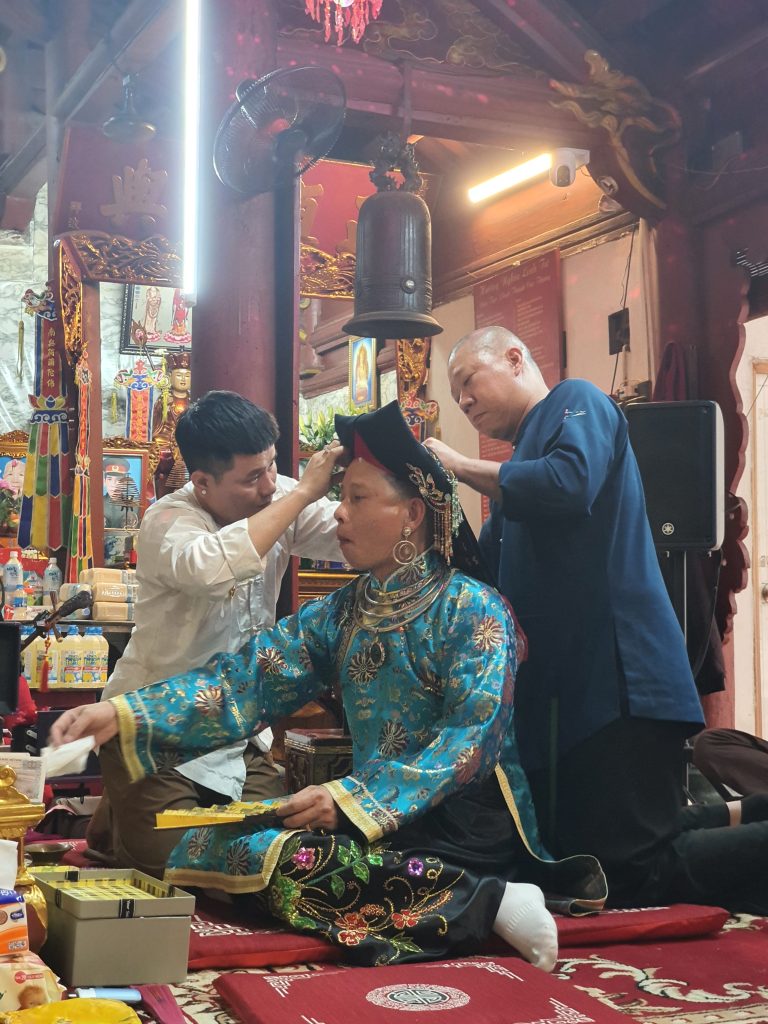
-
A medium performing the 6th Dame
-
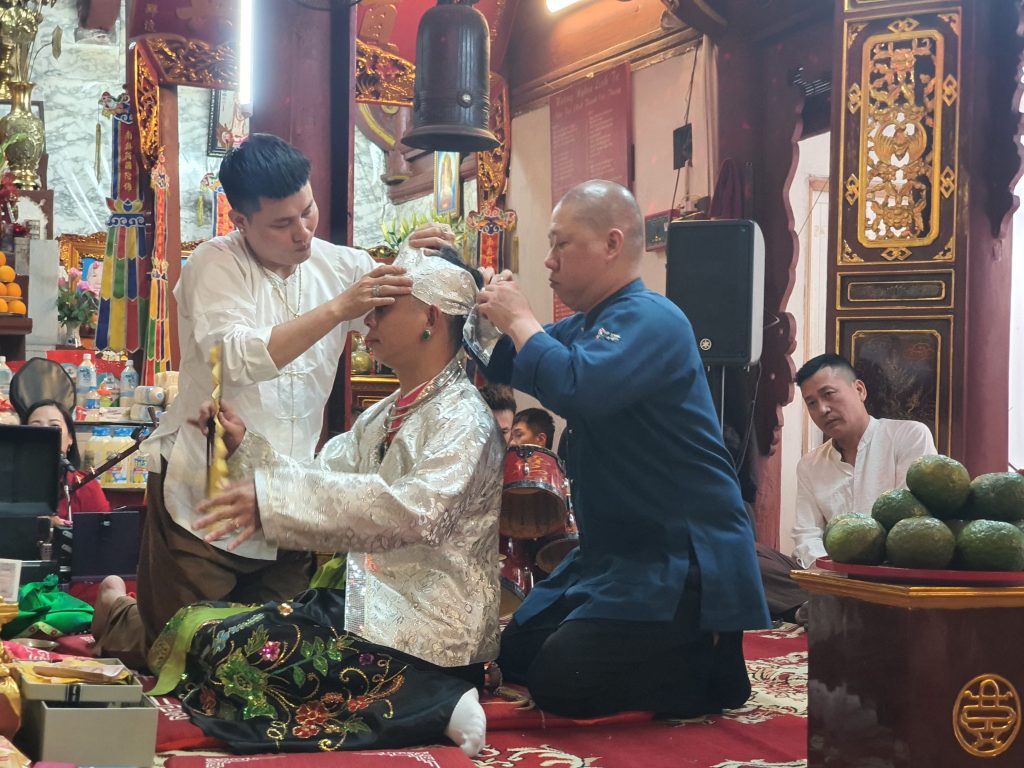
-
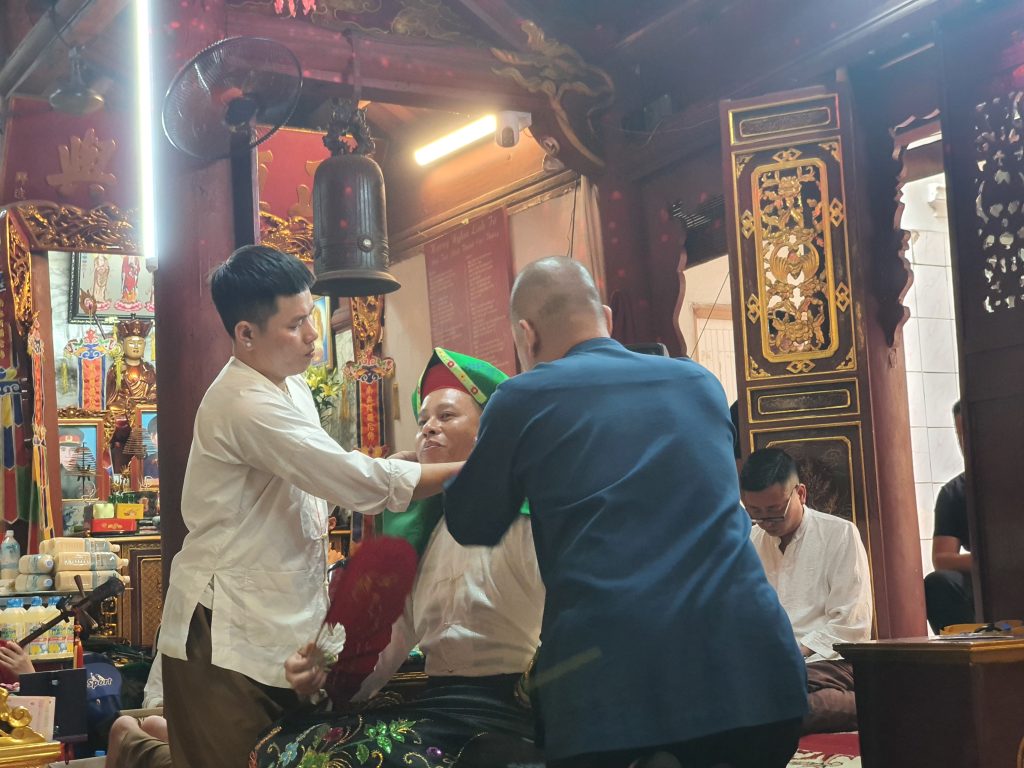
-
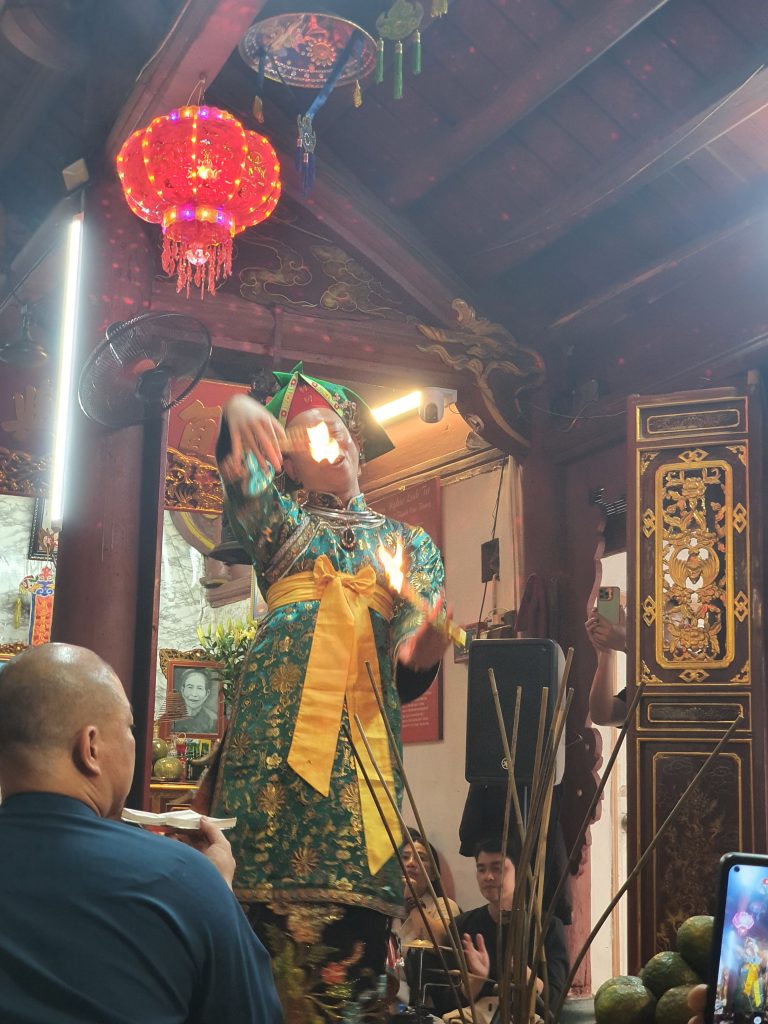
-
The meium in the 2nd Dame’s torch dance
-
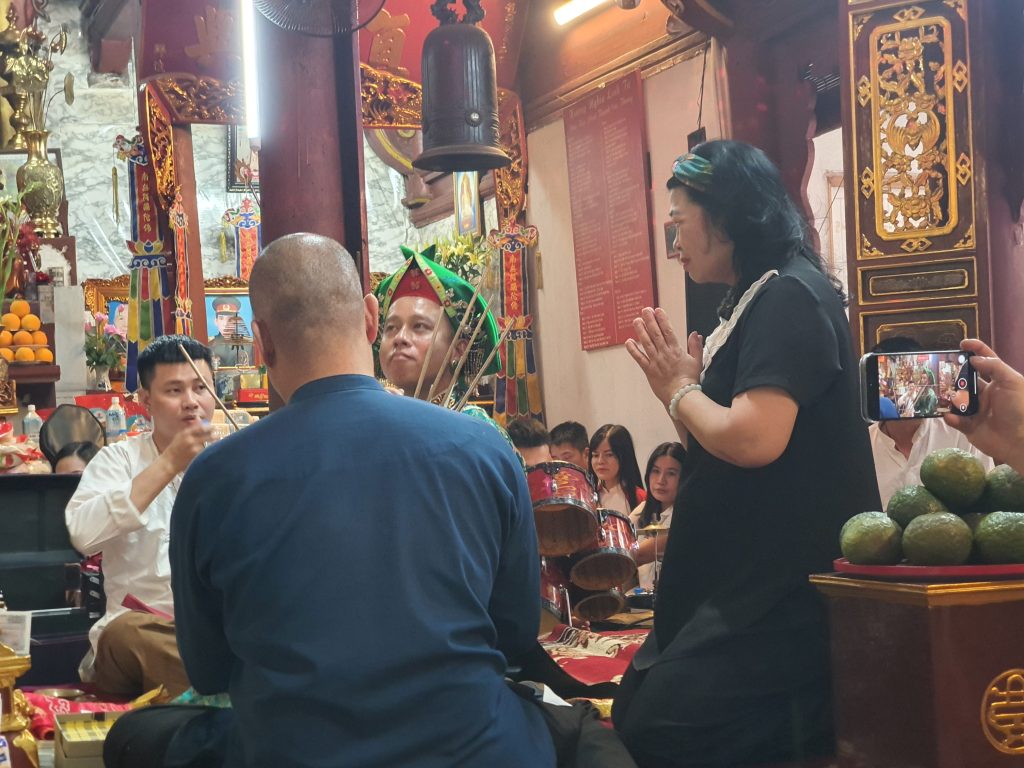
-
A dievotee asking for blessings







